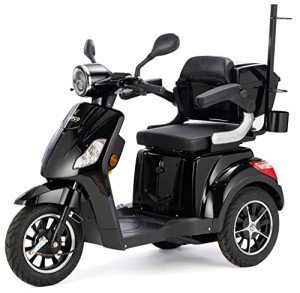A Comprehensive Guide to Buying a Mobility Scooter
Mobility scooters have ended up being an essential tool for numerous people looking to improve their self-reliance and mobility. With a huge range of designs and features offered, picking the right mobility scooter can be daunting. This short article offers a useful guide to help consumers browse their choices, evaluate their needs, and make a notified purchase.
Comprehending Mobility Scooters
Mobility scooters are electric automobiles designed for people who experience mobility obstacles. They are particularly advantageous for seniors, those with specials needs, or people recuperating from injuries. Mobility scooters can differ commonly in regards to style, features, and rates.
Kinds Of Mobility Scooters
Before starting a purchase, it's important to comprehend the different types of mobility scooters readily available:
Three-Wheel Scooters:
- Generally more maneuverable in tight spaces
- Lightweight and portable
- Perfect for indoor usage
Four-Wheel Scooters:
- Offer greater stability and balance
- Appropriate for outside usage over various terrains
- Generally have a longer battery life
Foldable/Portable Scooters:
- Designed to be easily transferred and saved
- Can frequently fit in the trunk of an automobile
- Ideal for those who travel often
Heavy-Duty Scooters:
- Built to accommodate bigger people
- Frequently come with more robust functions for outdoor use
- Generally equipped with bigger batteries for extended variety
Factors to Consider When Buying a Mobility Scooter
1. Weight Capacity
Choose a mobility scooter that can support the user's weight. Most scooters have a weight limitation varying from 250 to 500 pounds. It is important to make sure that the scooter can accommodate the user easily.
2. Range and Battery Life
The variety is how far the mobility scooter can travel on a single charge. Typical ranges differ in between 10 to 30 miles. Consider the user's everyday activities and choose a scooter with a suitable range.
3. Scooter Dimensions
Think about the size of the scooter, including its weight and measurements. A more compact scooter might be perfect for narrow corridors and tight areas, while larger models provide extra stability and convenience.
4. Surface Capability
Assess where the scooter will primarily be used. If the user plans to take a trip mainly on pavement, a lightweight model might be adequate. Nevertheless, if the user needs to traverse gravel or uneven surfaces, consider a four-wheel scooter built for off-road use.
Top Features to Look For
Comfort
- Adjustable Seats: Look for scooters with cushioned and height-adjustable seats to make sure comfort throughout travel.
- Armrests: These enhance safety and assistance while navigating.
Safety and Visibility
- Headlights and Taillights: Essential for nighttime use.
- Turn Signals and Reflectors: Improve presence and safety while on the roadway.
User-Friendly Controls
- Joystick or Drive Controls: These should be instinctive and easy to manipulate.
- Easy-to-Read Displays: A control panel that shows battery life, speed, and range can boost the user experience.
Additional Features
- Storage Compartments: These use added benefit for carrying individual items while on the go.
- Weather condition Protection: Consider designs with rain covers or windshields if used in variable climate condition.
Expense Considerations
When budgeting for a mobility scooter, rates can vary anywhere from ₤ 500 to over ₤ 5,000 depending upon the design, functions, and brand name. Additional expenses might include:
- Extended Warranty: Protects versus defects and can save money in the long run.
- Accessories: Optional functions, such as updated seats, lights, or storage options.
| Function | Cost Range |
|---|---|
| Standard Models | ₤ 500 - ₤ 1,500 |
| Mid-Range Models | ₤ 1,500 - ₤ 3,000 |
| High-End Models | ₤ 3,000 - ₤ 5,000 |
Funding Options
Lots of retailers use funding plans, and some city government initiatives may supply grants or help for those in requirement. Examine potential monetary support with community resources or mobility service companies.
Frequently asked questions about Buying a Mobility Scooter
What is the distinction in between a mobility scooter and a wheelchair?
Mobility scooters are motorized and permit users to browse independently, while wheelchairs may require physical support or manual operation.
How do I preserve a mobility scooter?
Routine upkeep involves inspecting battery life, cleaning the scooter, and checking tires and brakes. Constantly describe the user handbook for particular standards.
Can mobility scooters be used indoors?
Yes, numerous models are designed for both indoor and outdoor use. However, three-wheel scooters tend to be better fit for indoor navigation due to their tighter turning radius.
Are mobility scooters covered by insurance?
Some insurance coverage prepares cover a part of the costs for mobility scooters if they are deemed medically essential. Contact your supplier for specific information.
How quick can a mobility scooter go?
The majority of mobility scooters have a maximum speed ranging from 4 to 8 miles per hour. However, mobility scooter suppliers might differ depending upon regional guidelines.
Getting a mobility scooter can substantially boost one's independence and quality of life. By comprehending the types, features, and costs related to mobility scooters, prospective buyers can make educated decisions that fit their requirements and choices. Personalization and thorough research are crucial to ensuring satisfaction with this essential investment.

